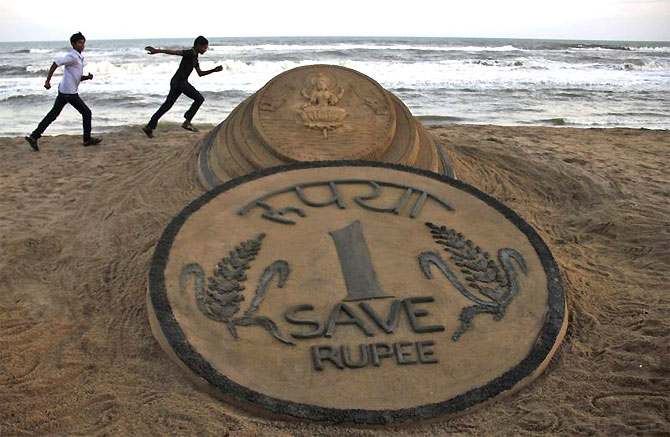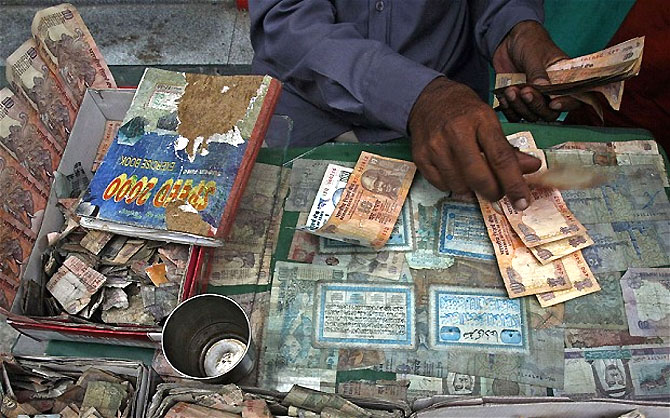 | « Back to article | Print this article |
Rupee approaching tipping point
India’s fundamentals might be better served by allowing the rupee cycle to run its course.
For a third year, India is grappling with the implications of a rapidly weakening currency. The trigger was external this time, but outsized outflows from bond markets have once again highlighted India’s external financing risks, lowering investor confidence in the currency.
This has pushed the rupee almost 22 per cent lower against the dollar since early May.
The risk now is of a weak rupee negatively impacting fundamentals. Early signs of this are visible. Growth likely slipped below five per cent year-on-year in the June quarter and the Wholesale price Index (WPI) climbed back above five per cent year-on-year in June due to higher imported inflation.
A continuation of these trends could result in a negative feedback loop where renewed weakness in fundamentals leads to further portfolio outflows and the rupee weakness.
Since June this year, Indian bonds have experienced $8.6 billion outflows, but equity outflows have been modest so far at $2.9 billion. An uncertain global backdrop of approaching QE tapering by the US central bank, rising US yields and US dollar strength complicates the situation further.
Click on NEXT for more...
Rupee approaching tipping point
The worries are not unique to India. Other emerging market currencies with current account deficits like the South African rand (ZAR), Brazilian real (BRL), Indonesian rupiah (IDR) and Turkish lira (TRY), have been met with the same treatment.
Since May, the ZAR has depreciated 25 per cent against the US dollar, the BRL 22 per cent, the IDR 16 per cent, and the TRY 12 per cent.
Broad emerging markets currency weakness might well persist ahead of the crucial US Federal Open Market Committee meeting on 17-18 September or until Fed tapering is priced in.
Thus, another three to four per cent loss in the rupee from current levels is possible. Market participants are focussing on policy announcements to stabilise the rupee. But, in such an environment, policy measures may fail to have the desired impact on the rupee, as has been the case so far.
Indeed, India’s fundamentals might be better served by allowing the rupee cycle to run its course. The initial adjustment is likely to be painful, but eventually a weaker currency would trigger the automatic economic stabilisers and revive investor confidence.
Click on NEXT for more...
Rupee approaching tipping point
In fact, trends in the current account suggest that the rupee might not be too far from the tipping point.
The trade deficit narrowed to $12.2 billion in July from $20 billion in May and is likely to improve further over the course of the year.
Gold and silver imports have reduced substantially following the import duty raises and tighter importing norms and exports should benefit from the pickup in global growth.
This should push the current account deficit towards four per cent of Gross domestic product in FY14 from almost five per cent in FY13.
On the capital account, portfolio inflows will likely resume once the positive trends in the current account are visible. Although, election-related uncertainties might lead to slower inflows.
Foreign direct investment is already strong this year with net inflows of $6.7 billion between April-June , 76 per cent higher than the same period last year.
Significantly, the lowering of India’s current account deficit is likely to coincide with a broad improvement in Asia-ex Japan trade balances as US growth revives and commodity prices stay soft. This should turn investors favourable on Asian currencies again and pause the dollar rally. The rupee’s attractive carry and valuations would make it a prime beneficiary when this happens.
Priyanka Kishore is Forex Strategist, Standard Chartered Bank



